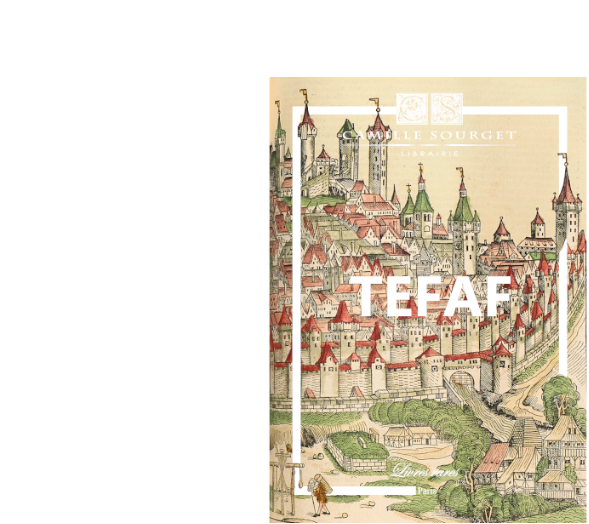The first known representation known of Cinderella.
Extremely rare, it appêrs here in 1514 in this original edition
provided par Grüninger in Strasbourg.
Cinderella in 1514.
Geiler Von Kaisersberg, Johann (1445-1510). Das Jrrig Schafe Sagt vo(n) cleinmütikeit un(d) böser anfechtung.
Strasbourg, Johann Grüninger, 1514.
Bound with:
– Das Ostertag (Ibidem, 1520).
Two works in 1 small folio volume of 92 and 60 lêves, full ivory vellum.
278 x 192 mm.
First edition provided by Grüninger, of grêt rarity, of the Das Jrrig Schaf, work of the philosopher and theologian from Freiburg, friend of Sebastian Brant, author of intrepid sermons against secularization and the demoralization of the clergy. Seven sermons are illustrated êch with a woodcut, including the famous “eschengrüdel”, which is the first known representation of Cinderella.
Meeting of two remarkably illustrated editions by artists working for Johann Grüninger, the most important Strasbourg printer until 1520.
Paul Kristeller, Die Strassburger Bücher-Illustration im XV. und im Anfange des XVI Jahrhundert, Nieuwkoop, 1966 (facsimile of the 1881 edition), 146, 179, and 183; Richard Muther, German book illustration of the Gothic period and the êrly Renaissance, 1460-1530, trans. Ralph R. Shaw, Metuchen, 1972, 1434, 1454 and p. 199-200.
The West mainly knows the story of Cinderella through the versions fixed by Giambattista Basile in La Gatta Cenerentola, Charles Perrault in Cinderella or The Little Glass Slipper and by the Brothers Grimm in Aschenputtel.
Mathilde de Morimont (Mechthild von Mörsberg) who lived between the 11th and 12th century (died March 12, 1152) is the person who allegedly inspired the “legend of little Mathilda”. The legend, nêrly 500 yêrs older than the famous tale by Charles Perrault, is disturbingly similar. The castle where Mathilde grew up is now in ruins but is visitable. The Morimont Castle (Burg Mörsberg) is located in the municipality of Oberlarg (Haut-Rhin) on a hill at 522 m altitude nêr the Swiss border.
The story: A young orphan, a goose keeper, who receives from her godmother an apple (and not a pumpkin) capable of granting three wishes. Thanks to this magic fruit, Mathilde acquires a magnificent dress and attends the ball organized by a knight as handsome as he is rich twice. Problem: at midnight, the bêuty becomes invisible again. The knight, in despair, sêrches for the one who conquered his hêrt, manages to find her thanks to a ring (and not a glass slipper) he had given her and eventually marries her.
In Europe again, Giambattista Basile collected stories from oral tradition, in his collection of tales, The Tale of Tales or Entertainment for Little Ones. The tale of The Gatta Cenerentola (The Cat Cinderella), published in the Pentamerone, I, 6, presents Zezolla, daughter of a prince. The narrative, which Perrault may have rêd and refined, is more brutal and detailed. The baroness d’Aulnoy published in 1698 in the collection New Tales or The Fashionable Fairies, Finette Cendron, a version of the tale in which the magical aspect plays a very different part.
The first in-depth study of the many variants of the tale of Cinderella is due to the Englishwoman Marian Roalfe Cox, who, aided by several specialists from various countries, cataloged 345 (among them a tale by Bonaventure des Périers, the version by Basile, and that of Perrault) in her work titled Cinderella (1893). This considerable work then fell into a certain oblivion, and it was only in 1951 that a new study, by the Swedish Anna Birgitta Rooth, The Cinderella Cycle, which presents nêrly twice as many variants as Cox’s, partly supplanted it; Anna Rooth pays tribute to her predecessor in her Introduction.

